A Roof replacement involves removing old materials, inspecting the decking, installing new underlayment and shingles, and ensuring there's up-to-code ventilation. The process typically takes 1-3 days for most homes and can costs $5,500-$15,000 depending on the size, materials, and complexity. Proper planning, quality materials, and working with licensed contractors ensures your new roof protects your home for 20-50 years.
Roof Replacements Are Simple, The Inspection Comes First

Before we touch a single shingle, we need to see what we're working with. A thorough roof inspection tells us whether you actually need a full replacement or if repairs might buy you a few more years.
We're looking at shingle condition (curling, missing granules, cracking), checking for leaks in your attic, and examining the decking from below if possible. We also measure the roof to calculate materials. This inspection usually takes 30-60 minutes and should be free if you're getting a replacement estimate.
Here's what determines whether repair or replacement makes sense:
- Age matters most. Asphalt shingles last 20-30 years, so if you're past year 18-20 with multiple issues, replacement beats throwing money at repairs.
- Widespread damage vs. isolated problems. A few missing shingles? Repair. But if you've got damage across multiple sections, replacement becomes more cost-effective.
- Hidden decking issues. Sometimes we find rot or structural problems that only a full tearoff reveals.
Choosing Your Roofing Material
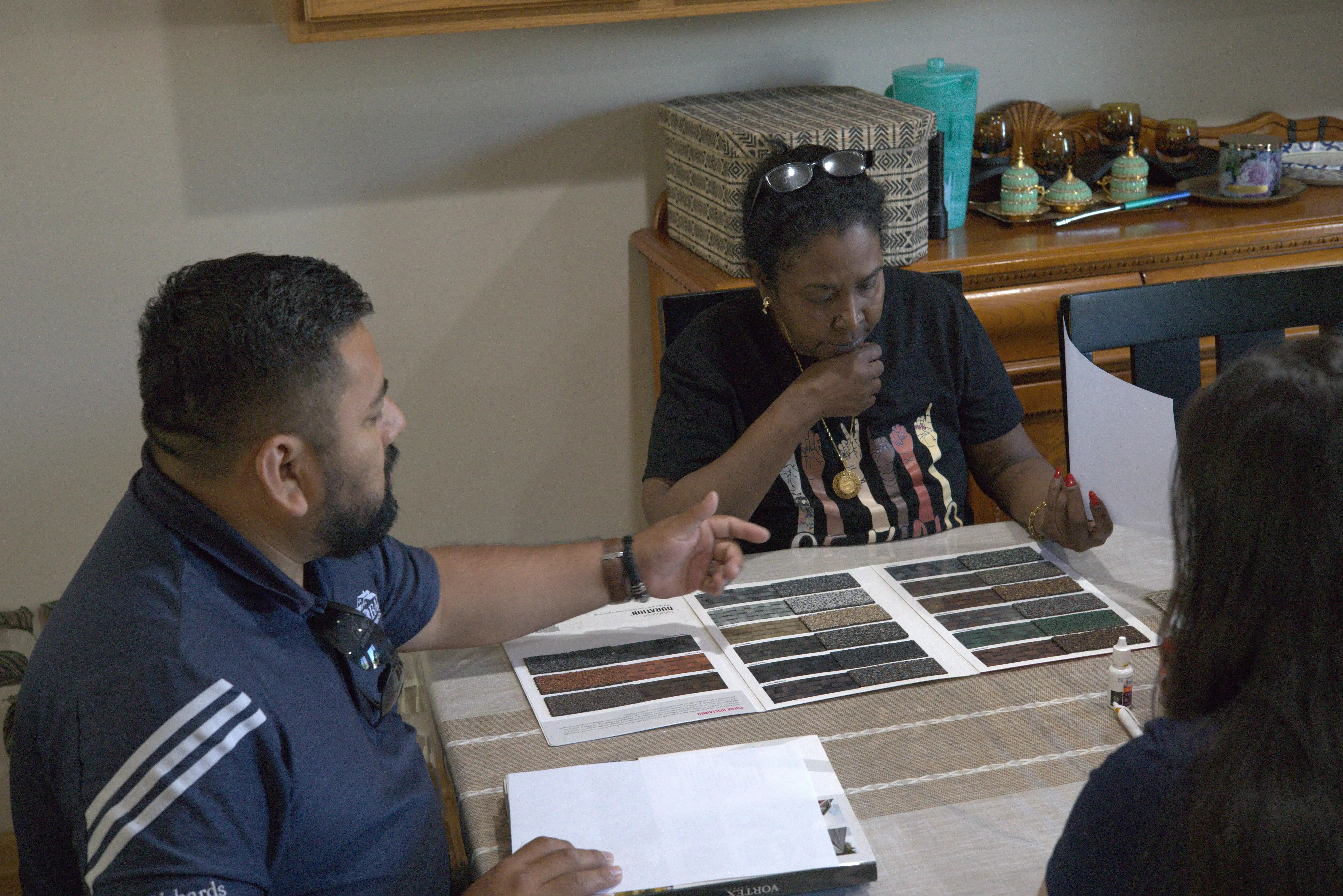
Alright, let's talk about what's actually going on your roof. Material choice affects everything from your budget to how long until you're doing this again.
Asphalt shingles dominate residential roofing because they balance cost and performance. Three-tab shingles ($90-$100 per square) last about 20 years. Architectural shingles ($120-$180 per square) give you 25-30 years with better curb appeal. Impact-resistant shingles cost more upfront but might save you on insurance and hold up better in hail-prone areas.
Metal roofing ($300-$800 per square) lasts 40-70 years and handles extreme weather well. The initial cost stings, but you're probably done with roof replacements for good. Standing seam metal looks clean and modern. Metal shingles mimic traditional styles if you want longevity without changing your home's character.
Tile and slate ($600-$1,500+ per square) can last 50-100 years, but your home needs the structural capacity to support the weight. Not every house can handle it, and installation requires specialized skills.
For most homeowners, architectural asphalt shingles hit the sweet spot of cost, performance, and longevity.
Getting Permits and Scheduling
Here's the thing: roof replacement isn't a weekend DIY project, and it's not something we just show up and do. Permits matter, even if they feel like red tape.
Most municipalities require roofing permits for full replacements. The permit ensures work meets local building codes and fire ratings. Some homeowners try to skip this step to save $150-$500, but that backfires during home sales or insurance claims. We pull permits as part of the job.
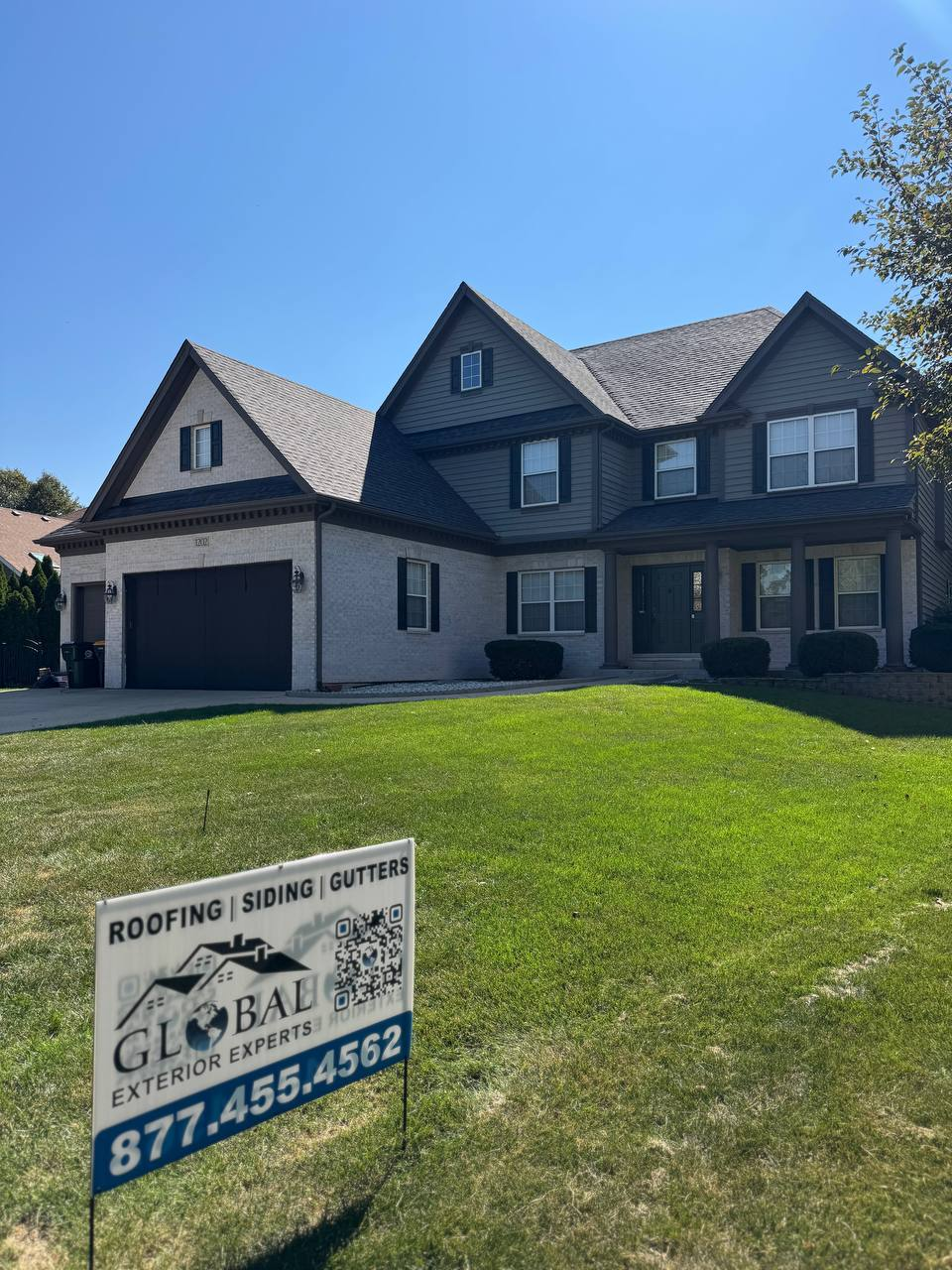
Code compliance isn't optional. Building codes evolve (especially in areas prone to hurricanes or wildfires), so your new roof needs to meet current standards even if your old one was grandfathered in. This might mean different underlayment, additional fasteners, or upgraded ventilation. These aren't upsells; they're requirements.
Weather dictates scheduling more than you'd think. We need consecutive dry days to expose your home's interior and install materials properly. Spring and fall are peak seasons, so expect 2-6 week lead times. Summer and winter often have faster availability, but extreme heat or cold brings its own challenges.
Material Delivery and Site Preparation
The day before we start the materials show up. A boom truck drops off shingle bundles, underlayment rolls, and supplies directly onto your roof (assuming the structure can handle it). This saves us time and effort during the tearoff.
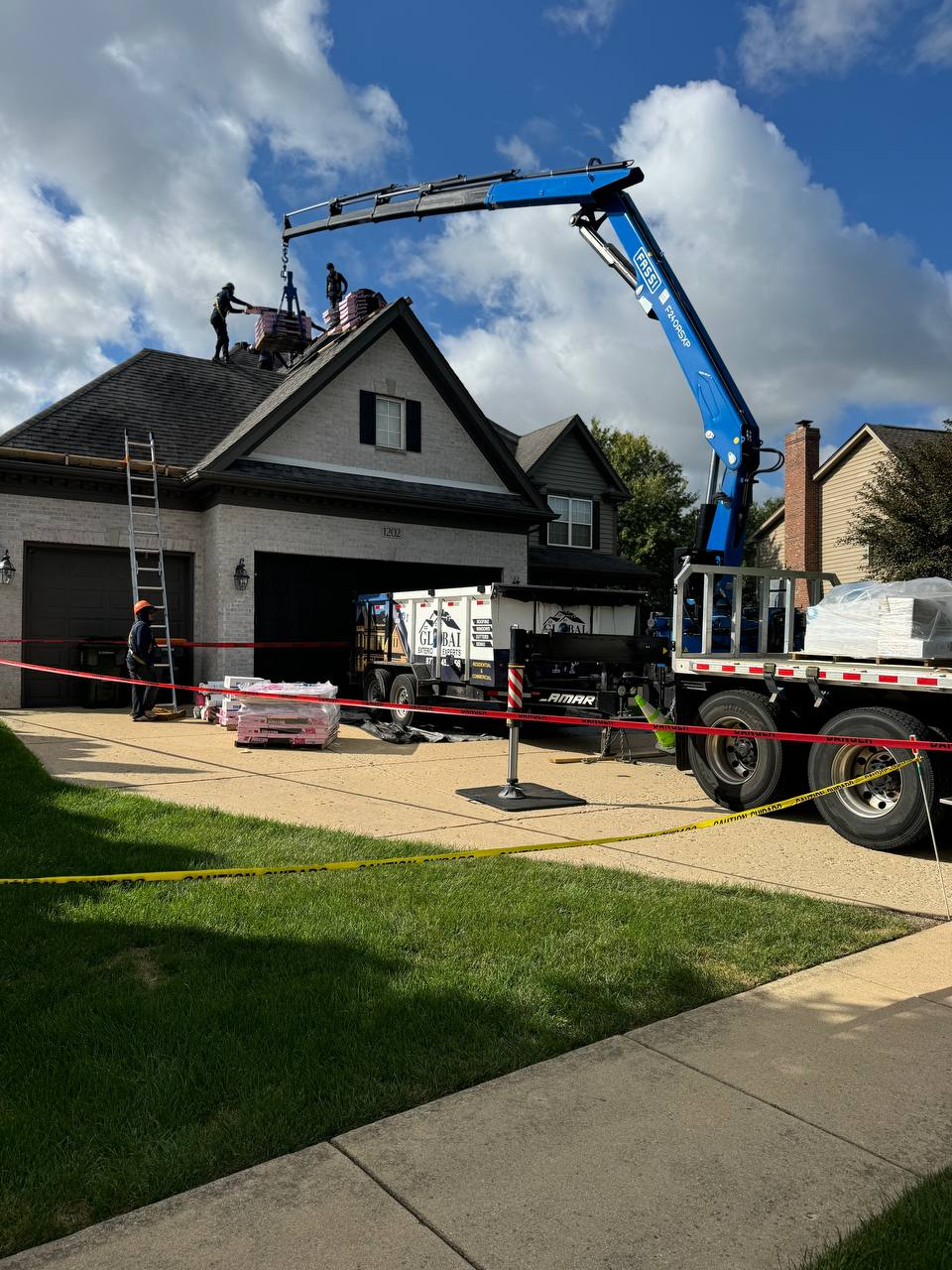
We also set up ground protection because debris happens. Tarps protect landscaping near the house, we lay plywood over AC units and delicate plants. Magnetic rollers get run across your yard multiple times during and after the job to catch any nails. Just make sure your kids and pets stay clear of the work area for a few days just to be extra cautious because hey, we aren't perfect.
Inside your home, vibrations from tearoff and hammering will rattle pictures and shake light fixtures. If you've got valuable items hanging on walls or sitting on high shelves, secure them. The garage becomes a drop zone for debris sometimes, so move vehicles to the street or driveway.
One more thing: roof replacement is loud. If you work from home or have small children who nap, plan accordingly for the excess of noise.
Removing the Old Roof (Tearoff)
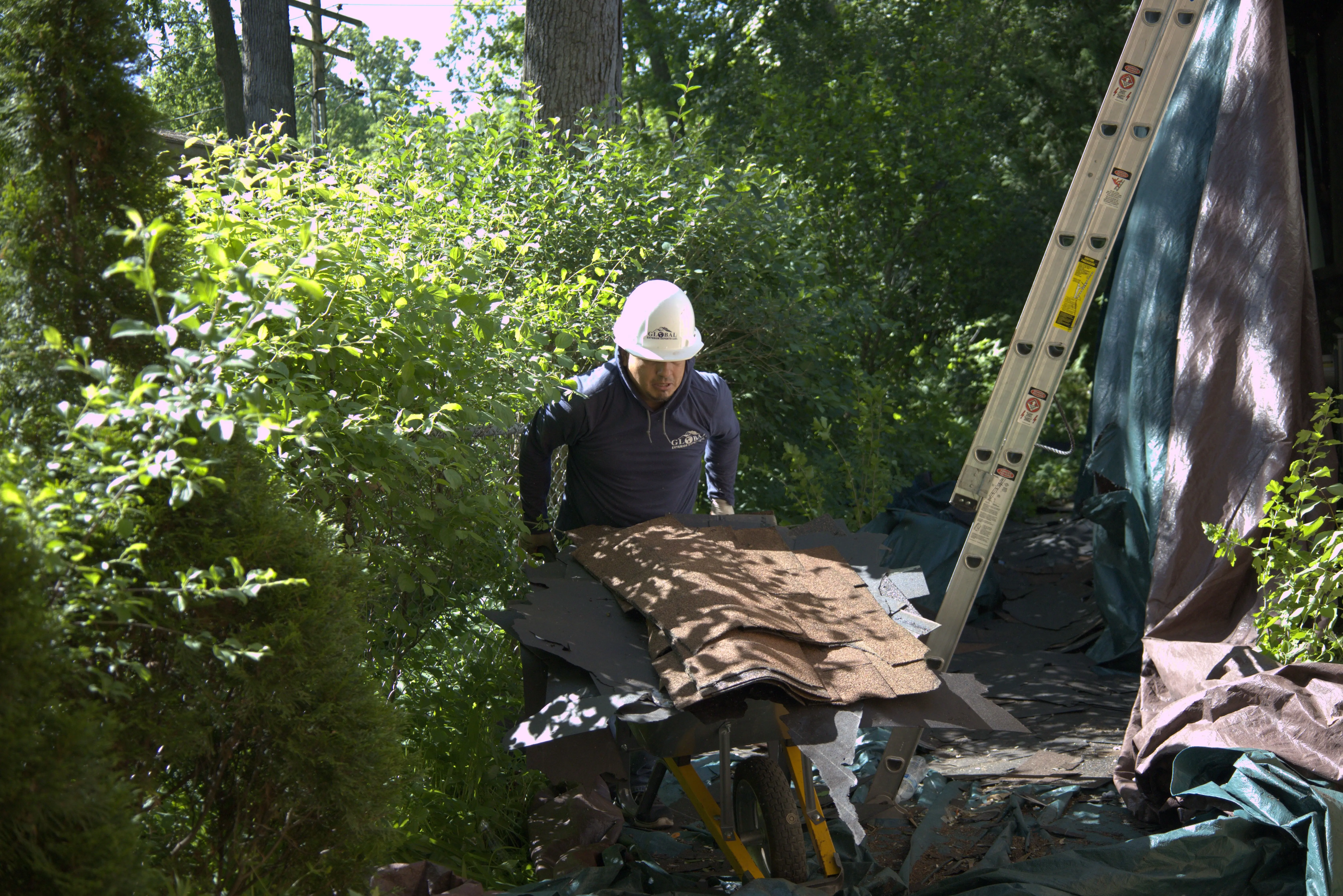
Tearoff day starts early. We strip everything down to the roof decking, removing old shingles, underlayment, flashing, and sometimes multiple layers if previous owners did overlay installations (which we don't recommend anymore).
How long does tearoff take? For an average 2,000-square-foot home, tearoff usually finishes in 3-5 hours with a full crew. Larger homes, steep pitches, or multiple layers slow things down. We're aiming for speed without rushing, because leaving decking exposed overnight invites trouble if unexpected rain moves in.
The debris goes into a dump trailer or dumpster positioned close to the house. Shingles are heavy (a typical roof generates 2-3 tons of waste), so positioning matters for safety and efficiency.
Some roofs hide surprises under old shingles. Wood decking might show rot around chimneys, plumbing vents, or in valleys where water concentrates. Discovering this during tearoff is actually good news because now we can fix it before installing your expensive new roof.
Decking Inspection and Repair

Once the old roof is gone, we inspect every inch of decking. We're walking the entire surface, checking for soft spots, rot, water damage, and structural issues.
Plywood or OSB decking should be solid and dry. If we find compromised sections, they get replaced. This isn't part of the original estimate because we can't see problems until tearoff happens. Decking repairs typically run $50-$100 per sheet, including material and labor.
Certain situations require more extensive work:
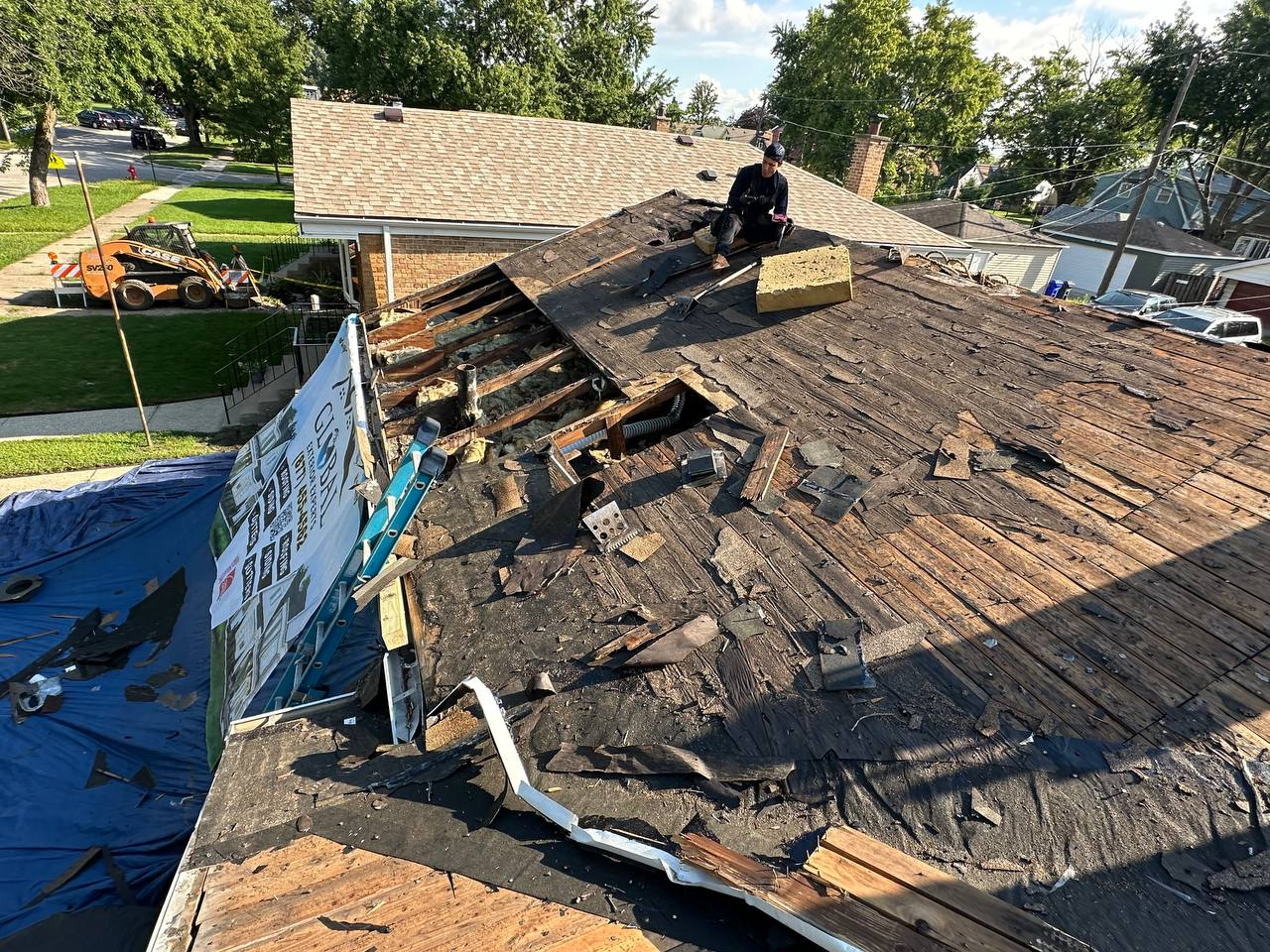
- Widely spaced board decking (common in older homes) sometimes needs plywood overlay for proper shingle installation.
- Sagging areas indicate truss or rafter problems that need structural attention.
- Inadequate ventilation means adding intake vents at soffits or ridge vents at the peak.
We don't skip decking repairs to save money or stay on schedule. Installing a premium roof over compromised decking guarantees problems down the road.
Installing Underlayment and Protection Layers

With solid decking confirmed, we install underlayment. This waterproof barrier is your roof's real protection. Shingles shed water, but underlayment stops it.
Felt paper (15-pound or 30-pound) used to be standard, but synthetic underlayment has mostly replaced it. Synthetic costs more but tears less easily, lies flatter, and handles sun exposure better if installation gets delayed.
In cold climates, we install ice and water shield along eaves, in valleys, and around penetrations (chimneys, vents, skylights). This self-sealing membrane prevents ice dams from forcing water under shingles. Some codes require it across the entire roof in severe weather zones.
Drip edge goes on next—metal flashing along roof edges that directs water into gutters and protects fascia boards. Proper flashing installation matters more than most homeowners realize. Water damage from poor flashing details causes more callbacks than any other issue.
Shingle Installation and Flashing Details
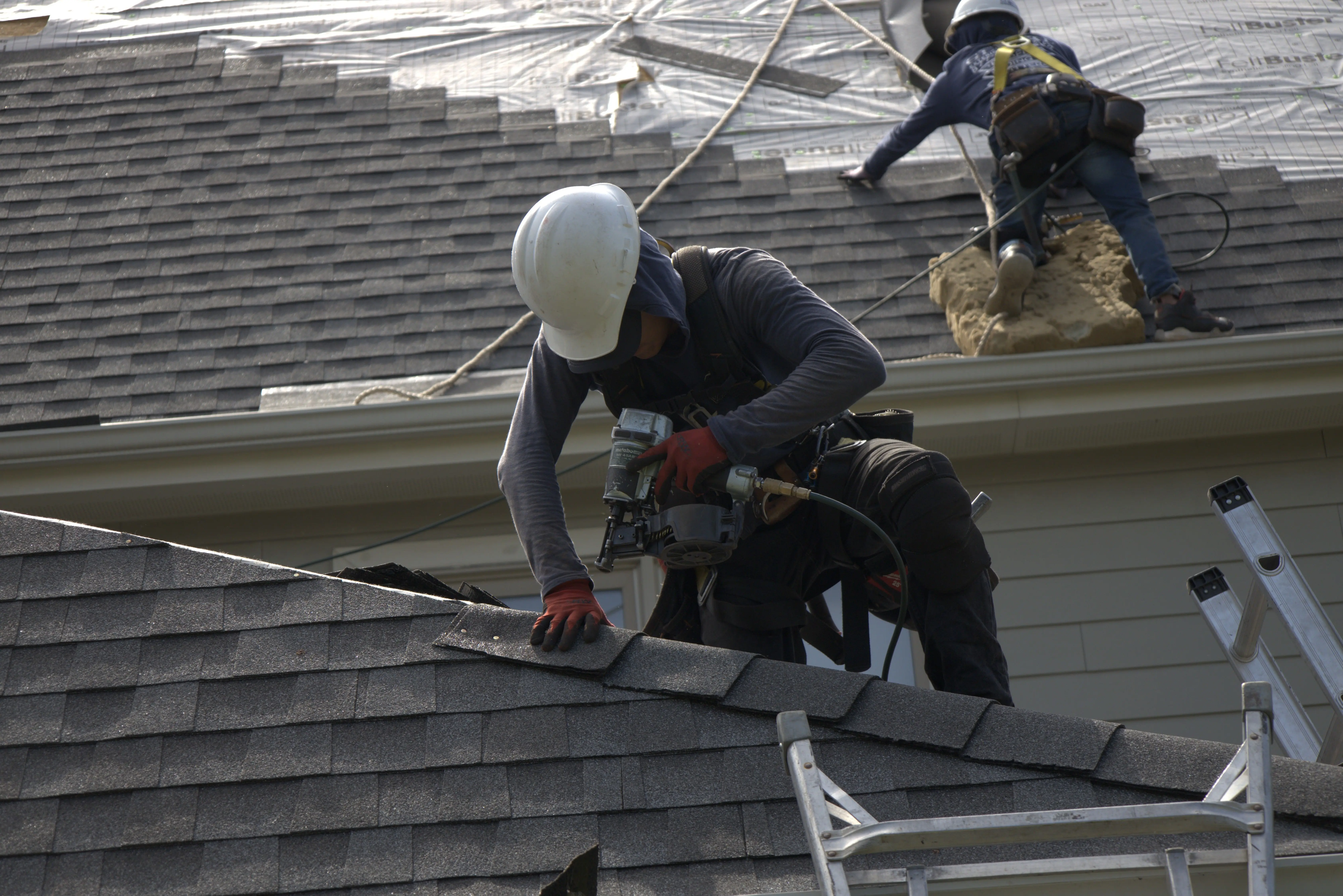
Now we're finally putting on the roof you'll see from the street. Shingle installation follows specific patterns and fastening requirements set by manufacturers and building codes.
We start at the eaves and work upward in overlapping rows. Each shingle gets nailed in designated spots (typically 4-6 nails depending on wind rating requirements). Nail placement matters because improper fastening causes blowoffs during storms.
Valleys (where two roof planes meet) get extra attention. We use either woven valley techniques or metal valley flashing, depending on shingle type and local practices. Water concentrates here, so installation needs to be perfect.
Flashing goes around every roof penetration:
- Chimneys get step flashing (individual pieces woven with each shingle course) and counter flashing (embedded in mortar joints).
- Plumbing vents use rubber boot flashing.
- Skylights require multi-piece flashing kits.
- Wall intersections get step flashing covered by siding or trim.
Poor flashing causes 90% of roof leaks. We're not exaggerating. You can have perfect shingles and still get water intrusion if flashing fails.
Ventilation (The Part Everyone Forgets)
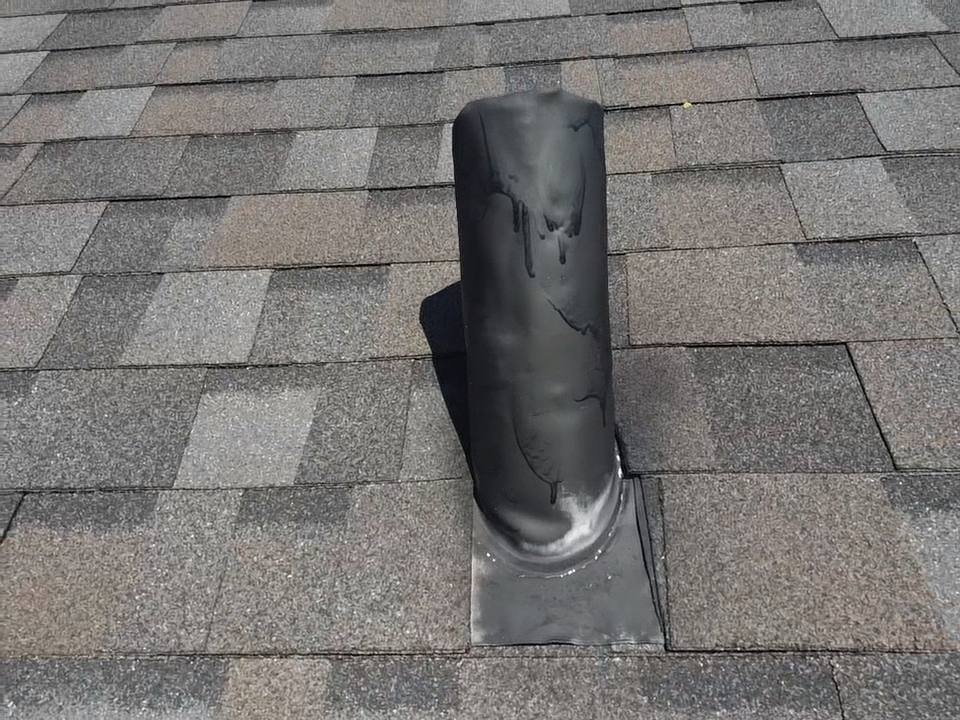
Of course, none of this comes free, but proper ventilation might be the best money you spend during roof replacement. Inadequate ventilation shortens shingle life, increases energy costs, and promotes ice dams in winter.
Balanced ventilation means equal intake (usually soffit vents) and exhaust (ridge vents, gable vents, or powered fans). Hot air rises and escapes through ridge vents while cool air enters through soffits, creating continuous airflow through the attic.
Many older homes lack proper intake venting because soffits are blocked by insulation or were never vented at all. Adding intake vents might require soffit modification, but the cost ($5-$15 per linear foot) pays back in extended roof life.
Ridge vents provide the best exhaust because they run the entire roof peak. Installation means cutting a slot along the ridge and covering it with vented cap shingles. Box vents or turbine vents work but provide less overall ventilation.
Calculate ventilation needs based on attic square footage (1 square foot of ventilation per 150 square feet of attic space, split equally between intake and exhaust). Under-ventilated roofs can void shingle warranties.
Cleanup and Final Inspection
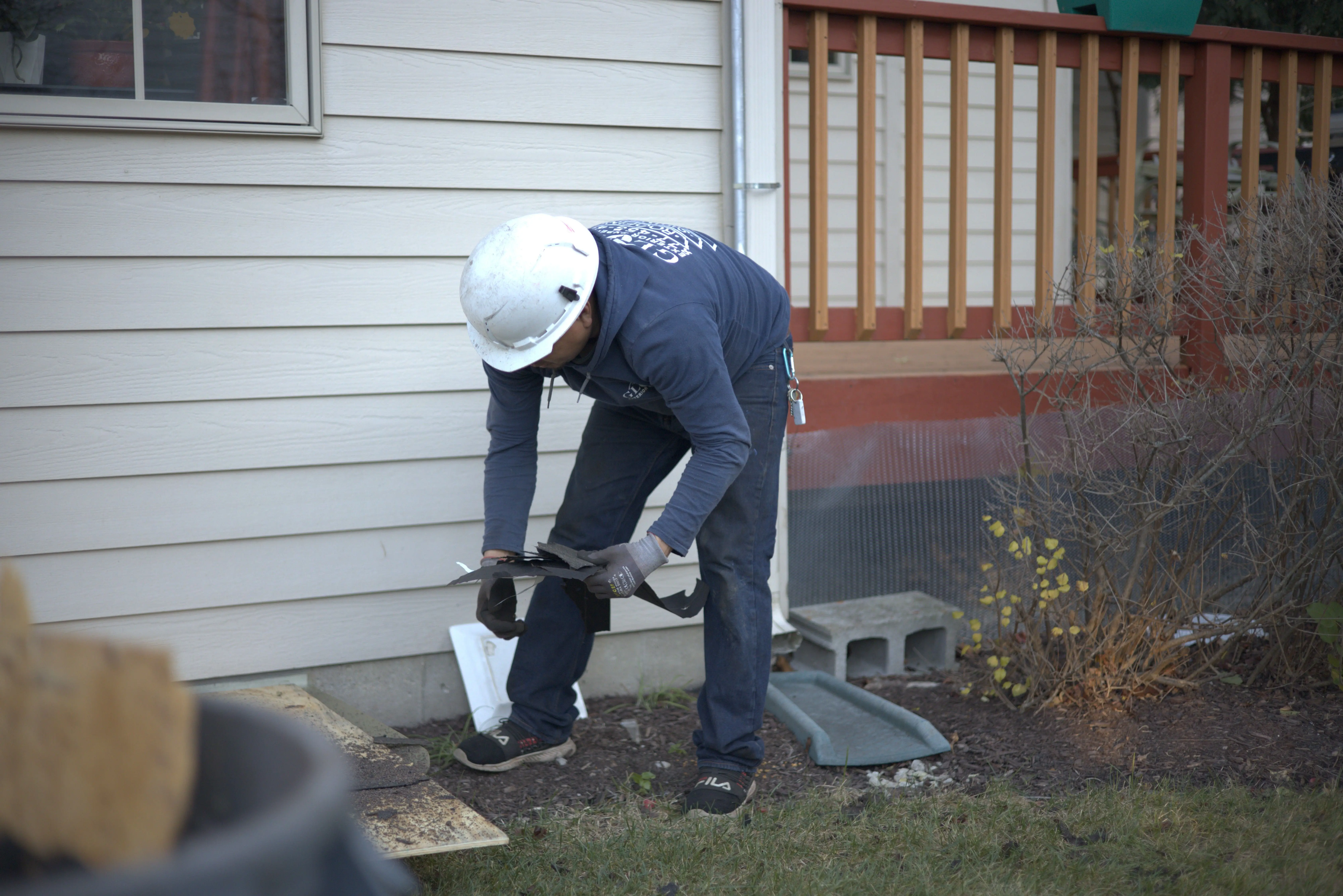
The job isn't done when the last shingle goes down. Cleanup separates professional crews from sloppy ones.
We run magnetic rollers across your entire property multiple times. These tools pick up nails and metal debris that standard sweeping misses. We also hand-pick obvious debris from flower beds and landscaping.
Gutters get cleaned of shingle granules and debris. Dumpsters leave. Tarps come up. Your property should look like we were never there (except for your beautiful new roof).
Final inspection happens with you present. We walk you around the property, showing completed work and explaining maintenance recommendations. The building inspector also needs to sign off before the permit closes, confirming code compliance.
You should receive warranty documentation for materials and workmanship. Manufacturer warranties (20-50 years depending on product) cover defects. Workmanship warranties (typically 1-10 years) cover installation issues. Read both and keep them with your home records.
What Roof Replacement Actually Costs
Let's cut through the vagueness. Roofing costs vary by region, material, and complexity, but here's what to expect:
Basic asphalt shingle replacement on a simple gable roof runs $5,500-$11,000 for a 1,500-2,000 square foot home. This includes tearoff, new synthetic underlayment, architectural shingles, standard ventilation, and basic flashing.
Premium asphalt installations (impact-resistant shingles, upgraded underlayment, enhanced ventilation) push that to $8,000-$15,000.
Metal roofing on the same home costs $15,000-$35,000 depending on metal type and profile. Standing seam costs more than metal shingles or panels.
Tile or slate starts around $20,000 and can exceed $50,000 for large or complex homes.
These numbers assume straightforward jobs. Costs increase for:
- Steep pitch (harder to work safely, requires more labor)
- Multiple stories (staging and safety equipment add time)
- Complex architecture (dormers, valleys, turrets)
- Decking replacement beyond normal expectations
- Structural repairs discovered during tearoff
- Accessibility issues (tight urban lots, limited equipment access)
Get at least three detailed estimates. Low bids sometimes mean cutting corners. Extremely high bids might indicate contractors who don't want the job. The middle range usually represents fair market value.
Timeline: How Long Does Roof Replacement Take?
Material delivery and preparation take 1-2 days before work starts. Actual installation timelines break down like this:
1,000-1,500 square feet: 1-2 days for simple layouts1,500-2,500 square feet: 2-3 days for typical complexity2,500-4,000 square feet: 3-5 daysLarge or complex homes: 5-10 days (multiple stories, steep pitch, extensive details)
Weather delays happen. If rain or high winds move in, we pause until conditions improve. Working through bad weather risks your home's interior and produces poor installation quality.
Who would've thought, but crew size affects timelines too. A 4-person crew finishes faster than 2 workers, but quality matters more than speed. Rushed installation causes problems years down the road.
What You Should Do Next
Start by getting your roof inspected if it's approaching 20 years old or showing visible wear. Don't wait until you've got active leaks—by then, you might have water damage in decking, insulation, or ceiling drywall.
When choosing a roofing contractor, verify licensing and insurance. Ask for recent customer references. Review written estimates carefully, making sure they specify materials by brand and grade (not just "architectural shingles").
Questions to ask during estimates:
- What's included in the price? (Tearoff, disposal, permits, materials, labor?)
- Do you handle decking repairs, and how are they priced?
- What's your timeline from contract to completion?
- What warranties cover materials and workmanship?
- How do you handle unexpected issues or weather delays?
Plan for the disruption. Clear your schedule for a few days when work happens. Move vehicles, secure valuables, keep kids and pets clear of the work area.
Wrapping This Up
Roof replacement protects your biggest investment. The process involves more than just nailing down shingles—it's about proper preparation, quality materials, skilled installation, and attention to details that most people never see.
Expect the job to take 1-3 days for most homes, cost $5,500-$15,000 for asphalt shingles (more for premium materials), and require permits and inspections. Choose materials based on budget, longevity goals, and your home's architectural style.
The right roof, properly installed, gives you 20-50 years of protection. Cut corners during installation, and you'll pay for it through premature failure, water damage, and another roof replacement sooner than you'd planned.
Consider these factors before moving forward: your roof's age and current condition, your budget for materials and potential repairs, local weather conditions that affect material choices, and the contractor's reputation and warranty offerings. Taking time to plan the project right beats rushing into decisions that you'll regret from the moment the first nail goes down.

.webp)
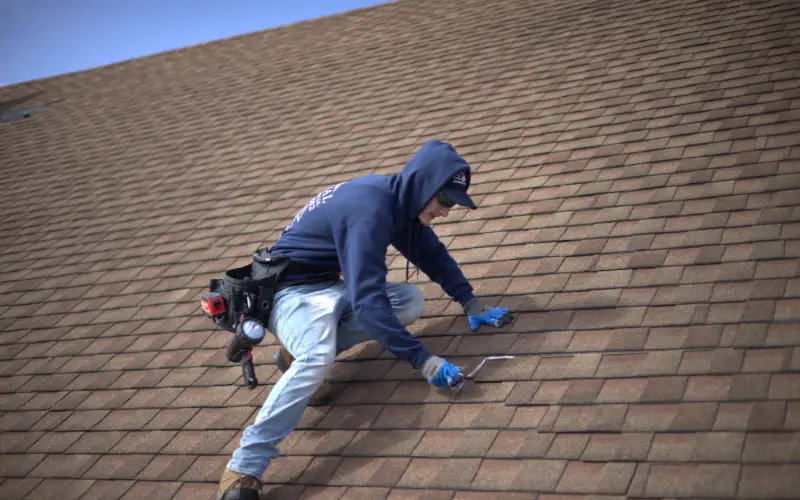
.webp)
.webp)